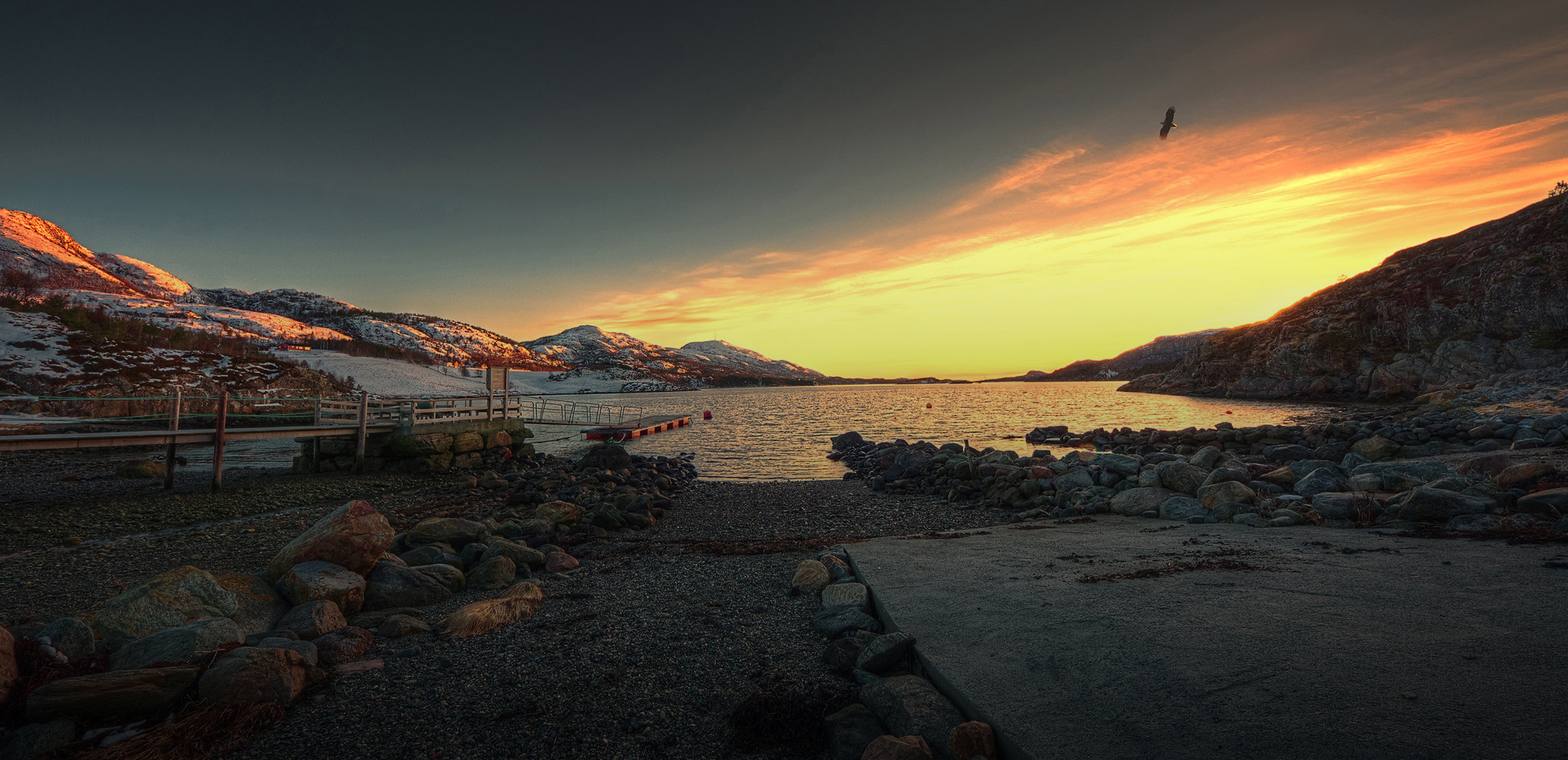

Oppdal Trøndelag county
Population
Area
On this page we have collected data and information that is intended as a starting point for assessing how the municipality is affected by climate risk. Scroll down to see how greenhouse gas emissions, climate change, investments and business structure may affect the climate risk Oppdal is exposed to.
Climate risk in Oppdal
Tap a category to display graphs for that category
Greenhouse gas emissions in the municipality
Change in the previous year
Emissions per citizen
Industrial emissions in Oppdal
Some firms are required to report indicators to the Norwegian Environment Agency, because the firm is associated with large emissions and/or a large environmental risk. Reported indicators include annual emissions, production volume, consumption of energy, and amounts of waste and hazardous waste produced. The table shows emissions from businesses obliged to report in Oppdal for the year of 2022.
The emissions are included in the municipality's overall emission accounts.
Note that only emissions from activities defined as industry are shown in the table. Emissions from offshore operations, sewage treatment plants and landfills are therefore not shown here.
Large emissions from land-based industry are considered to be a relevant proxy for transition risk. This is because it's likely that high-emitting businesses will be required to reduce their emissions in the future, and that some will face a decrease in demand for their products.
If these businesses also employ a large proportion of the local workforce, the risk is amplified as the local community may experience the loss of many jobs at the same time (a "cornerstone effect"). This can have dramatic effects on budgets as tax revenue is reduced.
The greenhouse gas accounts include emissions from three different greenhouse gases. To compare the global warming potential (GWP) of these, tonnes of CO2 equivalents is used as the common unit of measurement. Carbon dioxide (CO2) has GWP = 1, nitrous oxide (N2O) has GWP = 298 and methane (CH4) has GWP = 25. The factors are taken from the IPCC's fourth main report, and are the same as used in the national emission accounts and in international reporting. Source: the methodology note accompying the Norwegian Environment Agency's municipality distributed emission statistics (in Norwegian).
Assessment of risk and vulnerability: Is the municipality prepared?
Oppdal municipality's complete Risk and Vulnerability Analysis(RVA) is from 2022.
The municipalities are obligated to have a holistic risk and vulnerability assessment (RVA). This serves as the municipality's management document for managing risk and should address natural events and climate risk. The Norwegian Directorate for Civil Protection (DSB) recommends updating it every four years in connection with the update of the plan strategy.
Predictions for future climate in Oppdal
This climate profile summarizes the concrete effects that climate change may have on Oppdal towards year 2100. The profile is based on the IPCC scenario RCP 8.5 - a scenario characterised by high emissions and a lack of effective policies to reduce emissions. The climate profile has been prepared by the Norwegian Centre for Climate Services (NCCS).
Projects financed with KBN's green loans
KBN offers green loans with reduced interest rates to municipal sector projects with clear climate- and environmental ambitions. These loans are financed with green bonds.
KBN offers green loans with reduced interest rates to municipal sector projects with clear climate- and environmental ambitions. These loans are financed with green bonds.
Contact us
Climate risk for industries essential to Oppdal
We have listed the industries that employ the most people in the municipality and that we believe may be affected by climate risk. The questions in the table are intended as a starting point for dialogue with the local business community. We have tried to indicate the degree of severity at an overall level but recommend that you make a separate assessment based on the local context.
| Risk | Consequences |
|---|---|
| None Apart from those resulting from the location of production facilities, there are no obvious physical risk factors for this industry. |
| Risk | Consequences |
|---|---|
| High severity Measures to reduce car traffic | What do measures to reduce car traffic, e.g. relocating junctions or toll booths, mean for the location of shopping centres? |
| High severity The transition to the circular economy | What does the transition to the circular economy and the increase in recycling mean for the retail sector? |
| Risk | Consequences |
|---|---|
| Very high severity Extreme weather (damage and adaptation) | What does an increase in extreme weather, e.g. droughts, extreme precipitation, floods, storms or higher sea levels, mean in terms of the risk of erosion, the quantity and quality of crops, and the spread of (new) plant and animal diseases? |
| Very high severity Changes to weather patterns | What do changes to weather patterns mean for the growing season and overwintering conditions for plants? |
| Very high severity Climate change in other countries | What does the climate risk in other countries mean in terms of access to important commodities, e.g. soy? |
| Risk | Consequences |
|---|---|
| High severity Stricter regulations / increase in the cost of emitting greenhouse gases | What will future regulations intended to reduce greenhouse gas emissions or an increase in the cost of emissions mean for machinery fleets? |
| High severity Changes to consumer preferences | How might a decrease in demand for animal products (meat, dairy products) impact agriculture in the municipality? |
| Risk | Consequences |
|---|---|
| Medium severity Extreme weather (damage and adaptation) | What does an increase in extreme weather, particularly more precipitation, more intense precipitation, more floods and more surface runoff, changes to freeze-thaw cycles or more landslides, mean in terms of the wear and tear and scope of the damage sustained by transport infrastructure, and in terms of disruption to traffic? |
| Risk | Consequences |
|---|---|
| Very high severity Transition to zero-emissions in the transport sector | What do toll stations, zero-emission zones and road user charges mean for the transportation of goods and persons using fossil-fuel-powered motor vehicles? What would be the impact of customers of transport services, e.g. road-based goods transportation, increasingly demanding solutions that generate lower emissions? |
| Risk | Consequences |
|---|---|
| High severity Extreme weather (damage and adaptation) | What does an increase in extreme weather, particularly in extreme precipitation, storms, surface runoff and floods, mean for civil engineering, e.g. with regard to damage and drainage? |
| Risk | Consequences |
|---|---|
| High severity Transition to fossil-fuel-free civil engineering | What would be the impact of public sector tender competitions or private project owners stipulating that building sites must be fossil-fuel-free and/or that greenhouse gas emissions from construction phases must be reported? |
| Risk | Consequences |
|---|---|
| High severity Extreme weather (damage and adaptation) /changes to weather patterns | What will an increase in extreme weather, such as droughts or extreme precipitation, and changes to weather patterns mean in terms of access to raw materials and the manufacturing of food products? |
| High severity Climate risk in other countries | What would climate risk in other countries mean in terms of access to imported raw materials? |
| Risk | Consequences |
|---|---|
| High severity Changes to consumer behaviour | What would be the impact of consumers increasingly demanding information on the carbon footprint of food products? What would be the impact of consumer behaviour changing in favour of food products with a smaller carbon footprint? |
The sample is based on Statistics Norway's statistics on employment by place of residence (table 08536). You can learn more about how we have selected the industries in the methodology note.
At this time, we do not have any data for [blockname]
At this time, we have some problem viewing data

